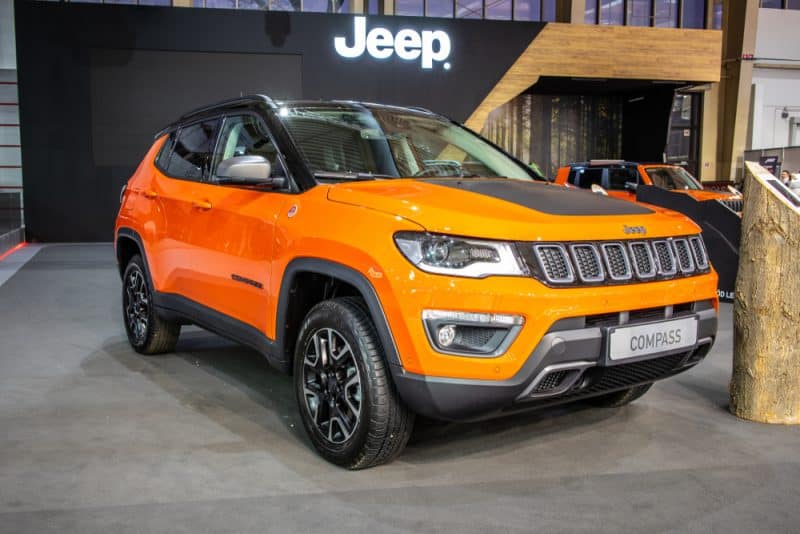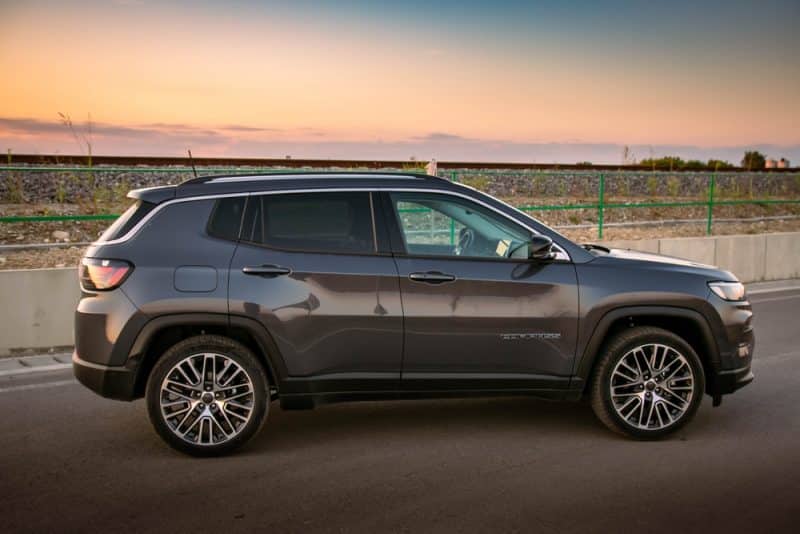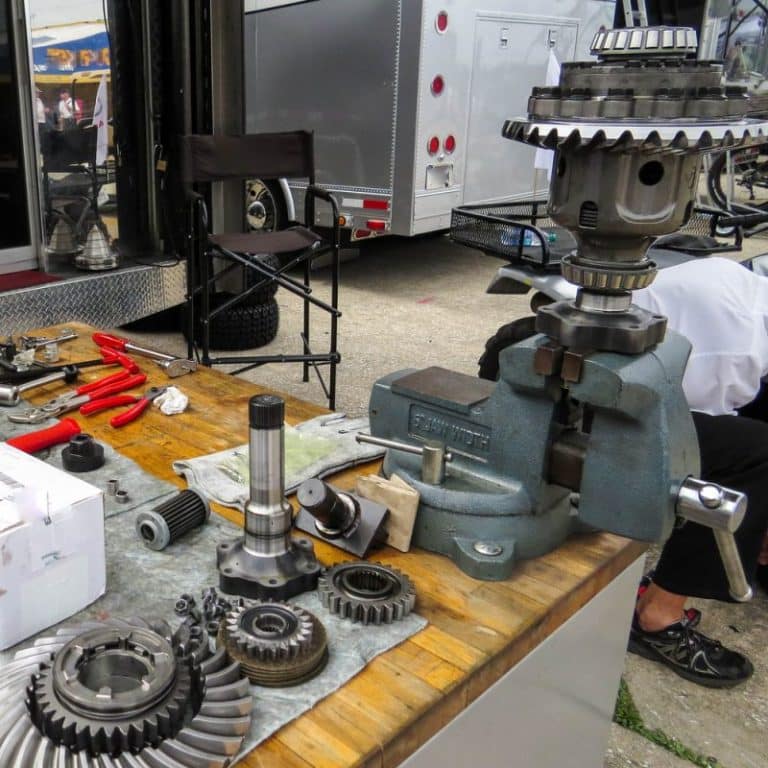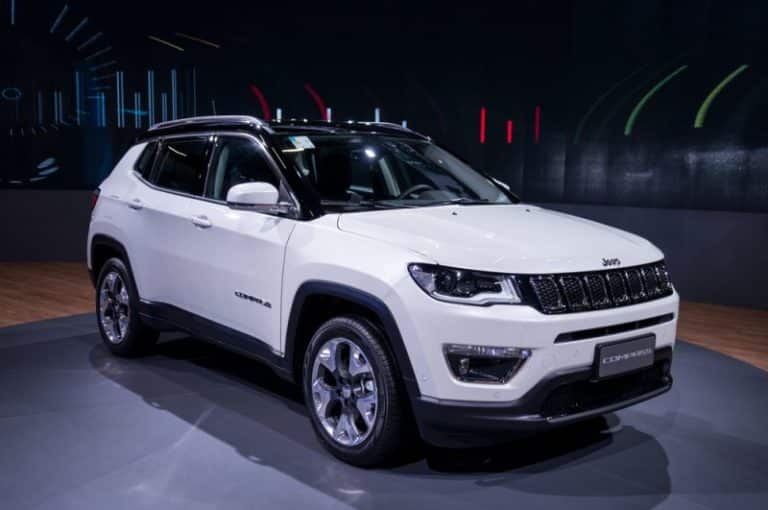Does Jeep Compass Come In 6 Cylinders? (Let’s Find Out)
When it comes to the power an engine provides, we all want the thrill of a powerful engine. A 6-cylinder engine contains six pistons, all driving your engine’s power.
The more cylinders an engine has, the more driving power it produces.
The Jeep Compass does not come in 6 cylinders. The Jeep Compass, like most small SUVs, small cars, and even some light trucks, has a 4-cylinder engine. However, its 4-cylinder engine in new models is powerful and offers great fuel economy, healthy for your bank account.
Is the Jeep Compass a 4 or 6 cylinder?

As already established above, the Jeep Compass has a four-cylinder engine.
Unfortunately, the four-cylinder engine that powers old models of the Jeep Compass is slow, and the optional nine-speed automatic transmission doesn’t execute shifts fast enough.
So if you’re looking into buying one, I’d advise you to choose a newer model and an all-wheel-drive to enjoy various terrain conquering modes onboard the Jeep Compass.
Nevertheless, older models’ acceleration isn’t smooth, and it’s hurried and not enjoyable. The driving dynamics are ethereal, and their fuel economy is below average.
What Engines Are Available On the Jeep Compass?
The Jeep Compass offers two different kinds of engines, a diesel engine, and a petrol engine. The petrol engine is 1368cc, and the diesel engine is 1956cc.
The transmission types are available in automatic and manual. The engine delivers 23 mpg city and 28 mpg on the highway on 4×2 and 4×4 models.
The Compass has a mileage of 14.1 to 17.1 kilometers per liter, depending on the fuel type and variant.
The Jeep Compass has a MultiAir engine start. In general, the Jeep Compass possesses a 180-horse-powered 2.4-liter 4-cylinder engine.
It offers a 6-speed automatic with a standard front-wheel drive and a 9-speed automatic with a 4-wheel drive.
Some new models have a 9-spd Front /All-wheel drive auto transmission, with 22/30 mpg.
However, older Jeep Compass models are at a disadvantage due to their marginally below-average fuel economy and the fact that they suffer from a weak engine.
The new Jeep Compass has a 4xe plug-in hybrid engine that allows you to select from three unique driving modes;
- E-Save: this mode helps preserve the battery’s charge level using the automatic charging system. The vehicle charges itself with no human interference whatsoever.
- Electric: you reduce carbon emissions using this mode because the vehicle only uses electric motors. If you’re an environmentalist, this is a great feature to help mother earth make a U-turn from global warming. True, not a complete U-turn, but it’s a significant step towards it.
- Hybrid: the hybrid mode uses both motors and the engine.
If you crave a sportier driving experience, you can rely on the sport mode from the select-terrain button panel.
When using only the electric motor to travel, you can go up to 50km on the battery alone. With a power of 240CV, this model can go from 0-100 acceleration in about 7.5 seconds.
This mode creates no emission, creating zero carbon impact on the atmosphere, and the best part is that it’s silent.
Jeep has introduced a new e-hybrid engine to newer models of the Jeep Compass. The technology results from the combined power of an electric motor that increases power up to 20HP(15kW).
The motor is integrated into the new 7-speed DCT and the combination of two petrol-powered 1.3 T4 Turbo powertrain petrol engines, producing 130HP across the front axle.
This engine is between a full hybrid and a mild hybrid. When the car is at very low speeds, the e-hybrid provides power on electric power alone just for a few hundred yards.
Making it less of a hybrid than a full one and more of a hybrid than a mild one. The Jeep Compass does not have a fully electrified model, but these are a step towards that.
This entails that you can order the Jeep Compass with a 4-cylinder engine, the axle plug-in hybrid, or the newer e-Hybrid.
Difference Between 4 and 6 cylinders?

While a 4-cylinder engine contains four pistons, a 6-cylinder engine contains six pistons, all powering your vehicle. The more the cylinders, the more power an engine provides.
Four-cylinder engines are lighter in weight and smaller, giving them greater fuel consumption management, which reduces your carbon footprint as opposed to a six-cylinder engine.
However, a downside is that they produce less power, which makes them suitable for smaller vehicles.
In addition, 4-cylinder engines are distinctively inline engines, which means the four cylinders are linear, unlike the V shape arrangement of most 6-cylinder engines.
This accounts for better fuel management than 6-cylinder engines.
While 6-cylinder engines or V6 engines (due to the V shape arrangement of the pistons) produce more power than 4-cylinder engines and are usually found in sports vehicles.
Since they produce more power, they’re found in large vehicles to enable them to carry more weight.
Six-cylinder engines also come in straight or in-line piston arrangements.
However, since the length of an engine determines the number of cylinders in a single bank, they tend to be expensive to manufacture, considering the cost-to-power ratio.
Most people often use the word “cylinder” to describe an engine, but just what is a cylinder? A cylinder is a vital part of an engine; this is where power generates by fuel combustion.
It comprises pistons, exhaust valves at the top, and an inlet.
Pistons move up and down with their counter-movements generating the power that moves your vehicle. Cars typically have a 4, 6, or 8-cylinder engine.
The cylinders are either laid flat or in a V-shape or linear arrangement.
Furthermore, to understand how a cylinder works, let me run through how an engine works. It takes the engine a series of procedures to power your vehicle.
They include;
#1. Intake:
The piston moves inside the cylinder, and the inlet valve opens, allowing air and fuel to mix.
#2. Compassion:
The piston compresses the fuel and air mix from the intake stage, making it combustible.
#3. Power:
At this stage, the stroke ignites the compressed air and fuel mixture, causing a spark.
#4. Exhaust:
The exhaust stroke is the last step.
At the exhaust stroke, the piston goes back down due to the outlet valve opening, and then the exhaust gases exit the engine through this opened outlet.
Conclusion
The number of cylinders an engine has should be considered when choosing its functionality.
If you’re big on fast vehicles, you should consider buying newer models of the Jeep Compass; if you want a vehicle to carry heavy cargo, Jeep Compass is not dependable for cargo space.





